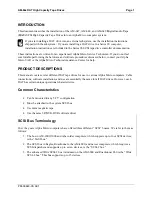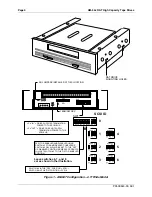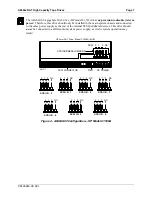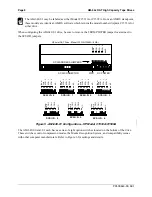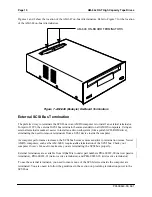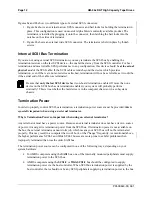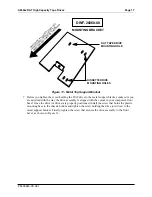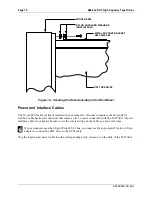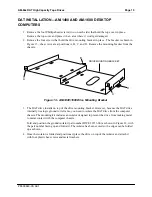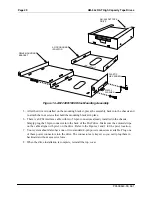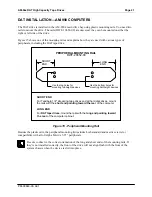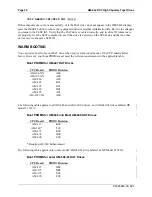
Page 12
AM-64x DAT High Capacity Tape Drives
PDI-00649-00, A01
Figures 8a and 8b show two different types of external SCSI connectors:
1. Figure 8a shows an external narrow SCSI connector and bail locks for holding the terminator in
place. This configuration is used on most of Alpha Micro's currently available product. The
terminator is installed by plugging it onto the connector, then latching the bail locks into the
notches on the sides of terminator.
2. Figure 8b shows an external wide SCSI connector. The terminator is held in place by thumb
screws.
Internal SCSI Bus Termination
If you are not using external SCSI termination, you may terminate the SCSI bus by enabling the
termination resistors on the last SCSI device—the one farthest away from the SCSI controller. For best
termination and most reliable SCSI performance in any configuration, this device should be at the actual
physical end of the SCSI cable. If the SCSI cable extends beyond the device which provides
termination, even if there are no more devices attached, termination will not be as reliable as it would be
if the actual end of the cable was terminated.
Be sure that only the last SCSI device has its on-board termination enabled. If more than one
device on the SCSI bus has its termination enabled, your system will probably perform
erratically! This is true whether the last device is in the computer chassis or in a subsystem
chassis.
Termination Power
In order to properly control SCSI bus termination, a termination power source must be provided; this is
especially important when using an external terminator.
Why is Termination Power so important when using an external terminator?
Any terminator must have a power source. Because an external terminator does not have its own source
of power, it must get its termination power from the SCSI bus. If termination power is not available on
the bus, the external terminator cannot do its job, which means your SCSI bus will not be terminated
properly. This may result in a computer that won't boot, or that "hangs" frequently. As mentioned above,
the higher performance SCSI-2 and Wide SCSI-2 busses are more prone to exhibit problems when
improperly terminated than was the older SASI bus.
The termination power source can be configured in one of the following ways, depending on your
system hardware:
•
In AMOS computers using the SASI bus, one of the internally mounted peripherals must supply
termination power to the SCSI bus.
•
AMOS computers using the SCSI-2 or Wide SCSI-2 bus should be configured to supply
termination power via the host controller. When SCSI bus termination power is supplied by the
host controller, there should not be any SCSI peripherals supplying termination power to the bus.




